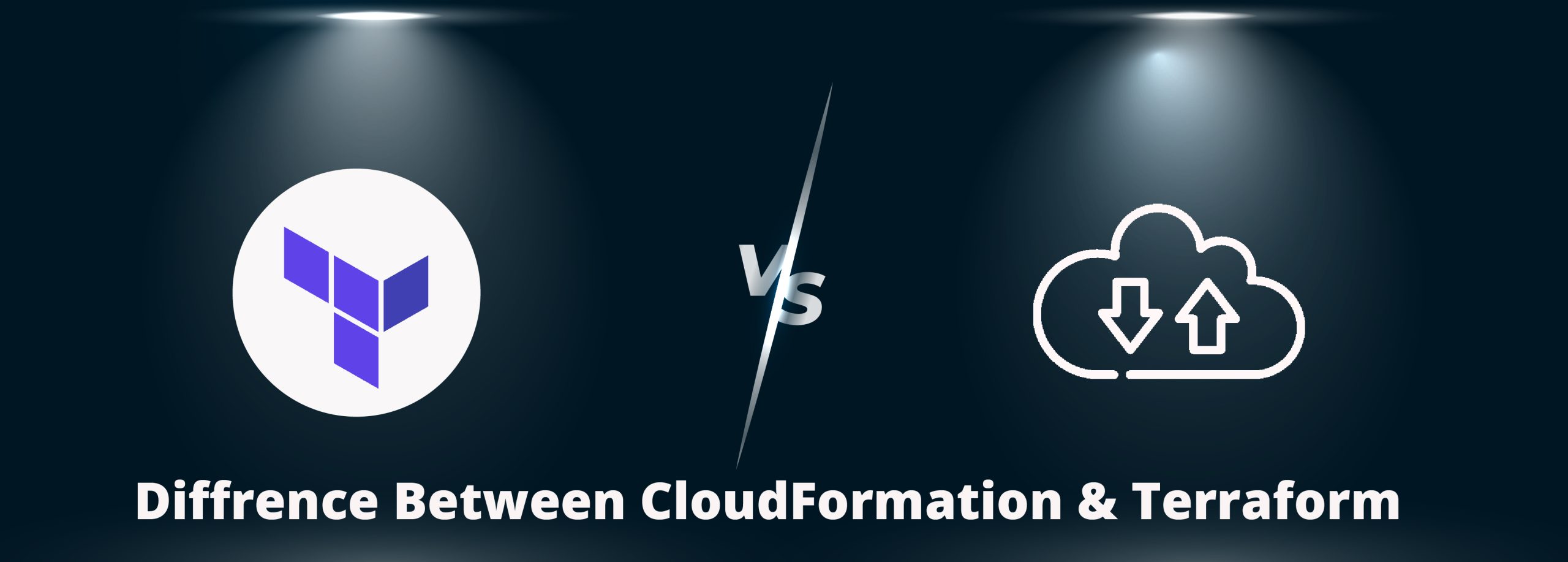Difference between CloudFormation and Terraform
On AWS, implementing infrastructure as code requires the employment of two of most the valuable tools – AWS CloudFormation and Terraform. Both of these tools have multiple usages but in their respective arenas. The more you get deeper into AWS Certification Training Course, the more you will be able to not only learn but understand the difference between CloudFormation and Terraform.
There is a huge margin of difference between the two said AWS tools. But before we get into that, let us see the following:
→ What is CloudFormation?
→ What is Terraform?
→ What is the line of similarity between CloudFormation and Terraform?
→ What is the difference between CloudFormation and Terraform?
Let’s begin!
What is CloudFormation?
CloudFormation is an AWS service which gives businesses as well as developers a relaxed way of creating a collection of related AWS along with third-party resources. Not only this, it also allows the provisioning and managing of them in an order that is predictable and manageable.
Deploying and updating database, compute and multiple other resources becomes doable for developers in a way that is simple and declarative.
Many people ask the relation and difference between CloudFormation and AWS Elastic Beanstalk. In reality, the two services have been designed in such a manner that they complement one another. They make the environment better for one another.
What is Terraform?
Terraform was created by HashiCorp and is an open-source infrastructure, which is found as a code. This software tool helps developers and other users with the hectic task of setting and also provisioning datacentre infrastructure. Also known as a cloud-agnostic tool, it also organizes APIs into segmented declarative configuration files for increased ease in sharing amongst teams. It can be treated as a code which can be versioned, edited and reviewed.
What is the line of similarity between CloudFormation and Terraform?
Some experts will go so far as to say that both CloudFormation and Terraform have a surprisingly similar approach. Find the line of connection here and decide for yourself!
- The tool, be it CloudFormation or Terraform, calculates and defined the steps needed to reach the target that has been defined.
- It is up to the user to define and select the configuration (which is Terraform) or a template (which is CloudFormation) to best describe the target state of their infrastructure.
- The tool chosen (either CloudFormation and Terraform) will then eventually execute the changes.
While the similarities between CloudFormation and Terraform might not seem high to many people, it still holds significance.
Now, let’s move on to the top difference between CloudFormation and Terraform.
What is the difference between CloudFormation and Terraform?
→ Scope
CloudFormation holds a huge part of AWS and it requires a little time to provision new service capabilities. In contrast, Terraform covers a large number of AWS resources too. However, when it comes to supporting any new and upcoming features, Terraform is much faster than CloudFormation.
Not only this Terraform also supports other cloud providers along with many third-party services.
→ State Management
The one important thing both CloudFormation and Terraform has to do is to keep a trail of all the resources there are under management.
CloudFormation manages its state with stacks but Terraform, by default, stores its state on the disk. Terraform also offers remote state, which is advisable when there are multiple users working on the same or one simple infrastructure.
However, CloudFormation manages the state that is within the managed service and has been termed a plus when compared to Terraform, depending upon the nature and need of the company.
→ Verify Changes
It is no joke that both CloudFormation and Terraform offers their users a huge number of opportunities and cons. With both CloudFormation and Terraform, you not only get the chance to create your own infrastructure from sheer scratch but you also get to update your created infrastructure later as and when you want.
In CloudFormation, you get ‘change sets’ which can be used to verify changes. In Terraform, you get ‘plan’ which is a command that will give you a glimpse into how your infrastructure will look like after the implementation of the command.
→ Rolling Updates
There is a stark difference between CloudFormation and Terraform when we talk about rolling updates. While CloudFormation will automatically perform a rolling update when using the update policy and give you a rollback in the case of a failure, Terraform does not do the same.
Terraform gives you ‘create_before_destroy’ with the help of which, you can contrivance ways to deploy new and better AMIs without any downtime. However, issues will arise in case you have a dynamic number.
→ License and Support
AWS offers their services, CloudFormation absolutely free of cost. Hence, AWS support plans already include CloudFormation as a part of the service.
Terraform, a creation of the company named Hashicorp, is an open-source project and is offered as a support as well.
→ Modularization
There are a lot of resources that are a part of the typical web application’s infrastructure. Some of these are Subnets, Auto Scaling Group, VPC, Security Groups, and Elastic Load Balancer, among multiple others. If one has to specify all of these resources in one single blueprint, then the job would become hectic and become a headache for the future too.
Terraform offers modules, which are open-source and can be stuck together as and when needed.
CloudFormation does not have the best support when it comes to offering modules. While some features are available with the user to help facilitate the modularization of the templates, it’s not exactly feasible.
→ Wait Conditions
Waiting is virtuous and adding wait conditions from time to time can bring a lot of added benefits to your infrastructure.
CloudFormation offers a big plus here by offering wait conditions. On the other hand, Terraform does not offer any wait conditions.
→ Handle Existing Resources
When it comes to important existing resources for a meagre amount of resource types, CloudFormation can do the job. Terraform also has the option to allow importuning existing resources.
As per enthusiasts and experts, Terraform does a better job at handling existing resources.
Conclusion
While there is a huge list difference between CloudFormation and Terraform, reporting all of them here is simply not possible. But like we said, once you enrol for AWS Certification Training course, you will get the inside-out of everything about the two mentioned tools from experts, in person and in depth.
Both CloudFormation as well as Terraform as powerful, mature, and spectacular tools. The answer to what is best suited for you will come to you when you read and understand the points written above carefully and while you decide to delve deeper via training and certification.






